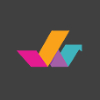Should You Develop Vacant Property?
Last updated 23rd December 2019 • JaeVee Marketing • JaeVee
With the government constantly concerned with putting more property on the market, is it time to consider vacant property as an innovative development strategy?
We’ll cover the ins and outs of developing vacant property in this comprehensive guide.
A bit of background
Freedom of information requests in 2018 revealed astonishing figures of vacant properties, with 216,000 homes that have been empty for over 6 months, 60,000 of those left empty for 2 + years.
What’s worse is that 23,000 had been empty for 5+ years and 11,000 for over 10 years.
It seems reasonable to utilise these properties in order to put a significant dent in our housing shortfall.
Some even expect more vacant properties due to Brexit uncertainty, although we’d take any numbers with a pinch of salt.
In light of this information, many have been urging the government to take control and repurpose these properties to tackle homelessness.
Some councils across England have been given extra funding to take on vacant properties.
Across the border to Ireland, a recent tax levy on vacant properties is being supported, but urged to go further.
While the UK conservatives are less interventionist, Boris Johnson has put forward the ‘Boris Brownfield’ strategy, which would suggest some support for re-invigorating vacant properties.
Could the private rental sector power have a play to part in redeveloping vacant property?
Why invest?
Meanwhile uses
Meanwhile uses have become more and more common to fill up vacant retail properties, with pop up shops and galleries and even flats just some of the successful uses for once vacant properties.
The success of these time limited ventures proves that vacant buildings still have a lot to offer developers and businesses alike.
Meanwhile uses are useful for everyone, making sure that properties aren’t being squatted in or vandalised before they find a permanent use.
Protecting these buildings from damage means that their condition will be much more viable for long term redevelopment.
Commercial
Meanwhile uses aren’t the only things that prove the viability of commercial property.
With permitted development rights now becoming permanent, it shows that it’s becoming easier than ever before to develop commercial to residential conversions.
And often all it takes is innovation to transform retail failures past into future successes.
There are plenty of opportunities to create meaningful commercial properties by investing in the ‘experience economy’.
Attractions such as escape rooms and https://www.coventrytelegraph.net/news/coventry-news/coventry-news-chinese-restaurant-16966534" target="_blank">restaurants are an example of the businesses that often successfully take up once-empty properties.
Don’t assume a property won’t be viable as a commercial asset just because it’s been left empty - you should instead think about the levels of innovation and the profile of small businesses in your area, as it’s novel tenants who will be the key to your property’s future - not the past.
Green
One of the main reasons the government is so keen on redeveloping vacant and brownfield sites is because it will massively decrease the amount of greenfield sites that need to be built on, making redevelopment of vacant properties the environmentally friendly option.
Plus, with every council and residents from all sides of the political spectrum desperate to fill up vacant properties, you’re likely to face little to no public objection, certainly compared to the ire empty properties attract.
Untapped market
While there have been moves made to utilise the UK’s many vacant properties, it’s obvious that we’re still lagging behind.
Making the commitment to develop just one development in your property portfolio from a vacant site will therefore make you stand out as an innovative industry leader, and make you and your business popular with the local community.
Why wouldn’t you?
Condition & cost
The number one factor that scares property developers off redeveloping vacant properties is condition - and the huge costs that can be sunk into repairing a property that’s been in a bad way.
But there are ways to mitigate these risks, namely:
1. Due diligence
Condition is vital when redeveloping a vacant property.
But you should also think about the type of property, and what returns you’re likely to see once you’ve put in the work.
Anything in good condition is obviously a good investment, but double check that there’s nothing nasty lurking behind the scenes.
Even with more major issues, there may be a way to make sites worth your while - with the easiest option to demolish the existing property to make way for multiple developments.
Researching your target audience, market values and build costs is crucial for redevelopment on vacant sites, as is collaboration with cost consultants, surveyors, and estate agents.
2. Vacant building credit
Vacant building credit is the government’s current incentive for the redevelopment of brownfield buildings.
It means that when a property developer brings back a vacant property into use, or demolishes it to make way for a new development, they will be offered the vacant building credit relevant to the existing gross floor space when the local planning authority calculates the affordable housing contribution of the site.
Affordable housing contributions may be required to increase the original floorspace.
The national Planning Practise Guidance gives the example that 'where a building with a gross floorspace of 8,000 square metres is demolished as part of a proposed development with a gross floorspace of 10,000 square metres, any affordable housing contribution should be a fifth of what would normally be sought'.
Legalities
The chance of getting involved in a complex legal case also puts off a lot of property developers.
But most local authorities employ an Empty property officer who is designed to help developers secure vacant sites.
It’s usually easy to find out the owner of the vacant property in question from their empty properties register, but if they won’t disclose this information, you can put in a freedom of information request instead.
Local authorities have their own powers to free up vacant property, including:
-
Enforced sale - if the owner has public debts secured to the property, the council can force the sale to reclaim its money.
-
Compulsory purchase - The local authority can step in and buy an empty property with or without the owner’s permission as a last resort.
-
PRODS - the public request to order proposal could work in your favour if the local authorities won’t.
This can compel public authorities to sell their own vacant buildings.
Mortgages
Developing a vacant property can bring up mortgage problems if it’s been classed as low value before renovation, and mortgage lenders don’t like the risk of being unable to secure your debts against the property if you can’t pay.
Like with flipping, your best bet might be a bridging loan to ‘bridge the gap’ between purchase and redevelopment, but watch out for high interest rates.
If your property is in better condition, you might want to consider one of the few mortgages specifically for redeveloping vacant properties.
At the moment, your only options seem to be with Buildstore or Ecology Building society, as other offers have been taken off the market.
If you’re still confused, it’s always best practise to go to an independent mortgage broker for clarity.
For more comprehensive guides to the parts of the industry other blogs don’t cover, read our regularly updated blog.




